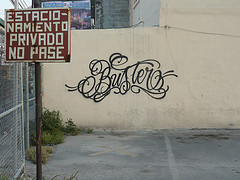Learn Software Faster with A Wallpaper
Mondays are productivity days at SimpleProductivity blog.

One of the best ways to increase your productivity skills in software is to learn the shortcuts. While menus make it easy to find the features you are looking for, shortcuts take you there immediately – without having to lift your hands from the keyboard. But learning the shortcuts for new software can be difficult, and can interrupt workflow if you have to move your eyes from the screen to a place where you have them written down.
Enter the DIY cheat sheet wallpaper.
Please note that I work on PCs, and these instructions are slanted accordingly.
Making the Wallpaper
This is actually very easy, with a few simple steps:
- Assemble your shortcuts into a list.
- Type the list into a program that can make picture files (like Paint).
- Save the resulting picture as your desktop wallpaper.
Finding the Shortcuts
Most software packages include a help file that is accessible under a help menu. In addition, most PC computer packages will present the help file by pressing F1 (there’s your first shortcut!). Search the help file for your shortcuts, and if you can’t find any, scour the web. If the package is a commonly used one, someone will have assembled a list for you.
Select the shortcuts you want to learn. While putting all the shortcuts on your list may be enticing, it can also cause overwhelm if you try to learn too much at once. Pick the shortcuts that you will use often. If you never need to open a Word Count dialog in Microsoft Word, leave that one off the list. But if you need to know how to center a paragraph, put that shortcut on the list.
A word of warning: while it might seem a good idea to put the limited number of shortcuts for all the packages you want to learn on one wallpaper, don’t. This will just lead to visual confusion. Learn one package at a time.
Making A Wallpaper
Every Windows computer comes with a built in painting program called Paint. This will suffice, although I do have to throw in a plug for my all-time favorite (free) simple image program called Paint.Net.
You will need to make a picture that is the same size as your screen. So if you are using a 600×800 screen resolution, make the “canvas” 600 pixels by 800 pixels. This will make sure that your wallpaper is not distorted when you use it.
Select the text tool and type your list out. Move it around as necessary, although you will find it easiest to see if you put the list on either the left or right side of the picture. If you feel particularly creative, add some other decorations to your picture and a background color (white is hard on the eyes after a time).
When you are done, save the file as a JPG file.
Setting A Windows Wallpaper
The easiest way to set a windows wallpaper is to find the place where you saved your file, right click on it, and choose “Set as desktop background”.
Use The Wallpaper
When you are in the program you have the shortcuts listed for, resize your window so you can see your shortcuts on the desktop. Then when you need to look something up, you just have to move your eyes to find it!
There are other ways to make shortcut lists that are easily accessible as well. Do you have a favorite? Share below.
Photo by Andrew*

